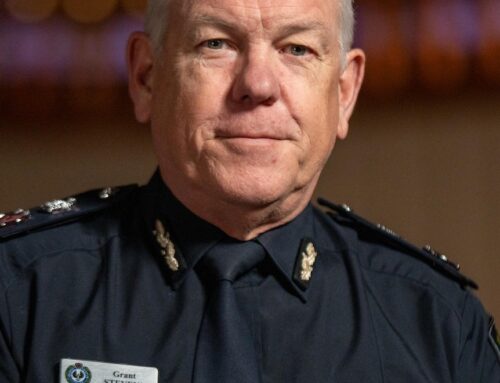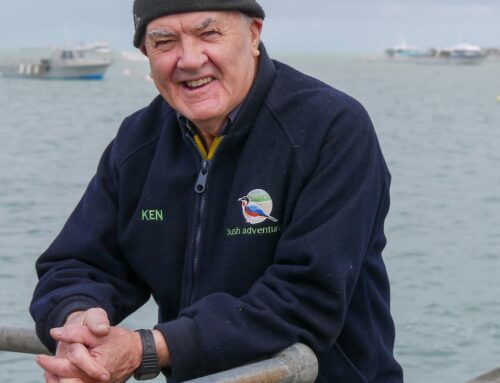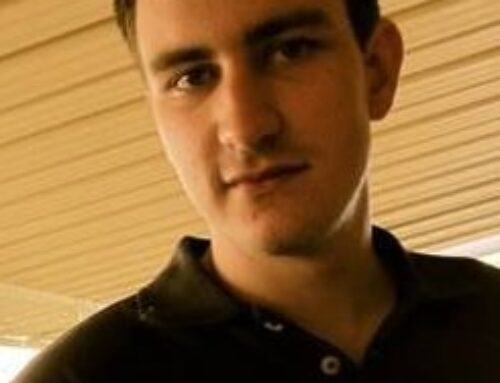In short:
A lack of funding for medical students and unpaid placements are being blamed for the healthcare crisis and doctor shortage.
Fifth-year medical student Tulani White regularly feels burnt out trying to working two jobs while studying and undertaking unpaid placement.
What’s next?
The Australian Medical Student Association is calling on the federal government to include medical students in the recently announced Commonwealth Prac Payment scheme.
Tulani White always wanted to be a doctor and it was no small feat when the girl from a working-class family in regional South Australia got into medicine.
But as the fifth-year student prepares to enter an industry already in crisis, she is worried.
The 25-year-old has not finished her degree but she often feels burnt out from studying, unpaid placements, and the cost of living.
“I love public health and primary prevention, and the idea that we can improve the overall health of the population,” Ms White said.
“I really loved the idea of becoming a surgeon, but now that’s completely thrown out the window because the health system being so burnt out already is just too daunting.”
Entering the medical world from a lower socio-economic background with no financial assistance has been a culture shock for Ms White.
She said there seemed to be an expectation that family or a significant other would financially support students until they became doctors.
That was not an option for Ms White, but she also believed it was stifling diversity in the sector.
“By expecting that parents can pay for you, what we’re doing is we’re creating a generation of doctors that come from the same type of family, that come from the same level of education, that came from areas that the general population don’t relate to as much,” she said.
Under pressure
Ms White deferred her first year of university and worked four jobs to secure savings to prepare for the years of unpaid placements that awaited her, but it still was not enough.
As she tries to balance 38 hours of a mandatory placement, she is also working two jobs and only gets one Sunday off a fortnight.
Ms White is ineligible for Centrelink and her partner recently changed jobs as a fly-in, fly-out worker to ease some of her stress.
“I could handle the time pressures of medicine if I also didn’t have the time pressures of work,” she said.
An individual studying a full-time tertiary course such as medicine may be eligible for Youth Allowance (student) based on circumstances including residency, income and assets.
The typical rate for a recipient living away from home with no dependent children is $646 a fortnight.
But the median rental price in Australia is sitting at $627 per week and some students are left struggling to pay for everyday amenities.
Ms White said her reality was one experienced by medical students across the country and that they needed more support to complete their studies.
“I want medicine to be a part of my life — I don’t want it to be my entire life,” she said.
“But if we could decrease the workload in terms of having to work for money on top of placement, we can increase the motivational level and ultimately create better doctors.”
Little change
Nearly 30 years ago Nicole Higgins was battling many of the same social mobility problems medical students from less privileged backgrounds still face today.
In the 1990s the now-president of the Royal Australian College of General Practitioners failed her first year of medicine because she was working two jobs.
Dr Higgins said placement poverty was the worst it had ever been.
“There is an assumption that people who want to become doctors are rich and that couldn’t be further from the truth,” she said.
“We need to ensure that the diversity of our students reflects the communities where they come from.”
Dr Higgins said the healthcare crisis was caused to a lack of funding and support for medical students and graduates.
“There has been no increase in the Commonwealth-supported placements over the last 10 years for medical students,” she said.
“Our student doctors are doing more than 3,000 hours of clinical placement for their degree, so they can’t work full-time.
“We really need to be investing in our doctors, and the failure to do that has meant we now have overflowing medical departments and ramping at our hospitals.”
Dr Higgins said the rate of graduate students wanting to become general practitioners had dropped by 30 per cent over the past 20 years and that a lack of funding was a major contributing factor.
“We have an obligation to our young medical students to support them so they can be the doctors of the future,” she said.
‘Sickened me’
In May the federal government introduced the Commonwealth Prac Payment, which allowed teaching, nursing, midwifery and social work students to be paid $319.50 a week for placement hours.
Australian Medical Student Association (AMSA) disability support officer Raener Miller said the payment was a slap in the face to medical students, who face three times the amount of required placement hours.
“It sickened me to my core,” she said.
“All health degrees should get the paid placement because we are all crucial components of the health workforce.”
| Unpaid placement requirements by degree | ||
|---|---|---|
| Nurses | 800 hours | 20 weeks |
| Teachers | 600 hours | 16 weeks |
| Social work | 1,000 hours | 26 weeks |
An AMSA petition calling on federal Education Minister Jason Clare to include medical students in the scheme received 10,000 signatures in two days.
Out of focus
Mr Clare said medical students were not included in the payment scheme because the government was told to focus on other degrees.
“The Universities Accord team recommended we focus the Commonwealth Prac Payment first on teaching, nursing, midwifery, early education teachers and social work, and that’s what we’re doing,” he said.
“The Commonwealth Prac Payment will give eligible people who have signed up to do some of the most important jobs in this country a bit of extra help to get the qualifications they need.”
Mr Clare declined to comment on whether the government would consider including more allied health degrees.
He also declined to comment on his thoughts on AMSA’s petition.
Ms White just wants to enter a workforce that reflects her community.
“It’s not about the idea of ‘I want money for my placement’ — it’s about wanting doctors from everywhere,” she said.
“We want to increase the overall health of our population and I think [subsidising placements] is a really good place to start.”
Get our local newsletter, delivered free each Tuesday
Posted , updated



